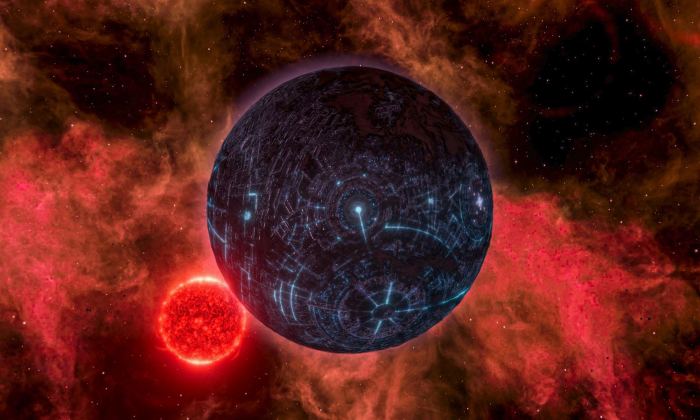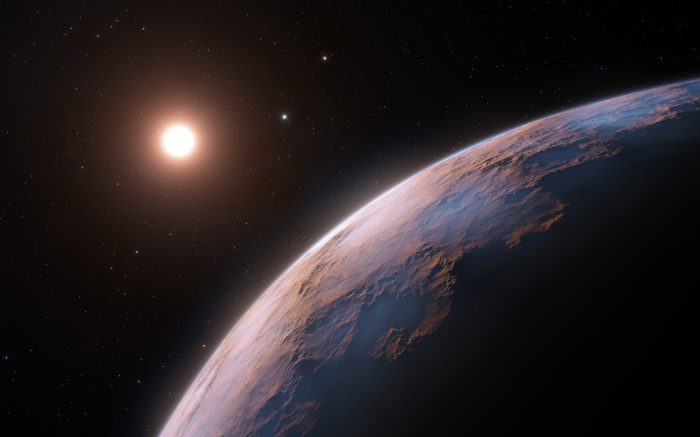Proxima Centauri b
In 2016, the world of astronomy was shaken by the discovery of Proxima Centauri b, an exoplanet orbiting Proxima Centauri, the closest star to our Sun. This discovery ignited the imaginations of scientists and the public alike, as it raised the tantalizing possibility of finding life beyond Earth. Proxima Centauri b’s proximity to our solar system makes it an incredibly exciting target for further study and exploration.
Discovery and Significance
Proxima Centauri b was discovered using the radial velocity method, which detects the wobble of a star caused by the gravitational pull of an orbiting planet. The discovery was announced by a team of astronomers led by Guillem Anglada-Escudé, who observed subtle shifts in the spectrum of Proxima Centauri, indicating the presence of a planet. This discovery was a landmark achievement in the search for exoplanets, particularly those that could potentially harbor life.
Physical Characteristics
Proxima Centauri b is a super-Earth, meaning it is larger and more massive than Earth. It has an estimated mass of 1.3 times Earth’s mass and a radius that is likely between 1.1 and 1.4 times Earth’s radius. The planet orbits Proxima Centauri at a distance of about 7.5 million kilometers, significantly closer than Earth orbits the Sun. Its orbital period is just 11.2 days.
Habitability
While Proxima Centauri b resides in the habitable zone of its star, meaning it receives enough radiation to potentially support liquid water on its surface, its habitability is still a matter of debate. The planet’s close proximity to its star exposes it to intense solar flares, which could strip away its atmosphere and make it uninhabitable.
A Hypothetical Mission to Proxima Centauri b
The immense distance to Proxima Centauri b, approximately 4.24 light-years, presents significant challenges to sending a mission. Even with current technology, it would take thousands of years for a spacecraft to reach the planet. However, with advancements in propulsion technology, such as nuclear fusion or solar sails, a mission to Proxima Centauri b could become a reality within a human lifetime.
A mission to Proxima Centauri b would be a monumental undertaking, but the potential benefits are enormous. The mission could provide us with invaluable data about the planet’s atmosphere, composition, and habitability, potentially revealing the presence of life beyond Earth.
The Proxima Centauri System: Life Supporting Planet Proxima Centauri
The Proxima Centauri system is a fascinating celestial neighborhood located just 4.24 light-years away from our own solar system. It is home to a red dwarf star, Proxima Centauri, and at least two confirmed planets, including the potentially habitable Proxima Centauri b. This system provides a unique opportunity to study the evolution of planetary systems around stars different from our Sun and to search for signs of life beyond Earth.
The Proxima Centauri Star
Proxima Centauri is a red dwarf star, a type of star that is much smaller and cooler than our Sun. It has a mass of about 12% that of the Sun and a radius of about 14% that of the Sun. Despite its small size, Proxima Centauri is an active star, exhibiting frequent flares that release bursts of energy and radiation. These flares can be powerful enough to strip away the atmospheres of planets orbiting close to the star, posing a challenge to the habitability of these worlds.
Proxima Centauri is a red dwarf star, a type of star that is much smaller and cooler than our Sun.
Habitability of Planets in the Proxima Centauri System
The habitability of planets in the Proxima Centauri system is a complex question that depends on several factors, including the star’s activity, the planet’s orbital distance, and the presence of an atmosphere. Proxima Centauri b, the most famous planet in the system, orbits within the star’s habitable zone, the region around a star where liquid water could exist on a planet’s surface. However, the intense flares from Proxima Centauri could make it difficult for life to evolve and thrive on Proxima Centauri b.
Planets in the Proxima Centauri System
Here is a table summarizing the known planets in the Proxima Centauri system:
| Planet | Orbital Period (Days) | Mass (Earth Masses) | Distance from Star (AU) |
|—|—|—|—|
| Proxima Centauri b | 11.2 | 1.3 | 0.05 |
| Proxima Centauri c | 5.12 | 6.9 | 1.5 |
Proxima Centauri b is a super-Earth, a planet with a mass greater than Earth but less than that of Neptune. It orbits very close to Proxima Centauri, completing a full orbit in just 11.2 days. Proxima Centauri c is a gas giant that orbits further out, completing a full orbit in 5.12 days.
Challenges to Life on Proxima Centauri b
Proxima Centauri b, a potentially habitable exoplanet orbiting the red dwarf star Proxima Centauri, faces several significant challenges that could hinder the development and survival of life. These challenges stem primarily from the star’s unique characteristics, including its proximity to the planet and its frequent, powerful flares.
Impact of Proxima Centauri’s Flares on Proxima Centauri b
Proxima Centauri, a red dwarf star, is known for its frequent and intense flares. These flares are sudden bursts of energy that can significantly impact the planet’s atmosphere and surface conditions. The intense radiation from these flares could strip away the planet’s atmosphere, making it uninhabitable. Additionally, the flares could potentially disrupt the planet’s magnetic field, leaving it vulnerable to harmful radiation from the star.
Adaptations Required for Life on Proxima Centauri b
Life on Proxima Centauri b, if it exists, would need to develop unique adaptations to survive in this challenging environment. For instance, organisms might need to develop mechanisms to shield themselves from the harmful radiation from the star’s flares. This could include:
- Thick atmospheres to absorb radiation
- Underground habitats to provide protection from flares
- Biological mechanisms to repair DNA damage caused by radiation
Additionally, life forms might need to adapt to the planet’s tidal locking, where one side always faces the star, leading to extreme temperature differences between the two sides.
Potential Biosignatures for Life on Proxima Centauri b, Life supporting planet proxima centauri
The presence of certain biosignatures, such as gases in the planet’s atmosphere, could indicate the presence of life on Proxima Centauri b. These biosignatures could include:
- Oxygen (O2): A byproduct of photosynthesis, which is a strong indicator of life.
- Methane (CH4): Produced by certain types of bacteria and can be a sign of life.
- Ozone (O3): A protective layer in the atmosphere, often associated with life.
However, it’s important to note that these biosignatures could also be produced by non-biological processes, making it crucial to consider all possible explanations.
Future Exploration and Research
Proxima Centauri b, our closest potentially habitable exoplanet neighbor, has sparked a surge of scientific curiosity and fueled ambitious plans for future exploration. The quest to understand this intriguing world and its potential for life is driving cutting-edge research and technological advancements.
Current Research Efforts
Researchers are currently employing a range of methods to study Proxima Centauri b, including:
- Precise radial velocity measurements: Astronomers are continuously monitoring Proxima Centauri’s wobble caused by the gravitational pull of its orbiting planets, including Proxima Centauri b. These measurements help refine our understanding of the planet’s mass, orbital period, and its potential habitability.
- Direct imaging: Although extremely challenging due to the faintness of Proxima Centauri b and its proximity to its host star, astronomers are striving to directly image the planet. This would allow for detailed characterization of its atmosphere, surface composition, and potential for life.
- Astrobiology simulations: Scientists are utilizing computer models to simulate the evolution of life on Proxima Centauri b, considering factors like the planet’s atmospheric composition, temperature, and radiation exposure. These simulations help predict the potential for life and its characteristics.
Technological Advancements
To enable future missions to Proxima Centauri b, significant technological advancements are needed:
- Advanced propulsion systems: The immense distance to Proxima Centauri b, approximately 4.24 light-years, poses a significant challenge for spacecraft travel. Developing propulsion systems that can achieve speeds approaching a substantial fraction of the speed of light is crucial for reaching the planet within a reasonable timeframe.
- Next-generation telescopes: To directly image Proxima Centauri b and analyze its atmosphere, we need telescopes with unprecedented sensitivity and resolution. These telescopes will require advanced optics, adaptive optics systems, and space-based platforms for optimal performance.
- Miniaturized probes: Sending a large, complex spacecraft to Proxima Centauri b is currently impractical due to the long travel time and associated technological challenges. Developing miniaturized probes with advanced capabilities and self-sufficiency could offer a more feasible approach.
Scientific Questions
Future exploration of the Proxima Centauri system aims to answer fundamental questions about Proxima Centauri b and its potential for life:
- Does Proxima Centauri b have an atmosphere? Understanding the planet’s atmospheric composition is crucial for assessing its habitability.
- Is there liquid water on the surface of Proxima Centauri b? Liquid water is considered essential for life as we know it.
- What is the geological history of Proxima Centauri b? The planet’s geological activity and history can provide insights into its potential for supporting life.
- Are there signs of past or present life on Proxima Centauri b? Detecting biosignatures, such as atmospheric gases or surface features, would provide compelling evidence for the existence of life.
Timeline of Key Milestones
- 2016: Discovery of Proxima Centauri b.
- 2020s: Continued characterization of Proxima Centauri b using existing telescopes and advanced observational techniques.
- 2030s: Launch of next-generation telescopes with enhanced capabilities for direct imaging and atmospheric analysis of Proxima Centauri b.
- 2040s-2050s: Potential development of advanced propulsion systems that could enable interstellar missions to Proxima Centauri b.
- 2050s-2100s: First interstellar missions to Proxima Centauri b, with the goal of gathering detailed data about the planet and searching for signs of life.
Life supporting planet proxima centauri – The quest to unravel the mysteries of Proxima Centauri b and its potential for life is an exciting journey into the unknown. While the challenges are immense, the potential rewards are equally extraordinary. Future missions to Proxima Centauri b, armed with advanced technology, hold the promise of unlocking the secrets of this intriguing world and potentially revealing whether we are alone in the universe.
While scientists are busy trying to figure out if Proxima Centauri b, the Earth-sized planet orbiting our nearest star, could actually support life, it seems some folks on Earth are already having trouble keeping their eyes on the road. A recent spike in traffic tickets in Taiwan has been attributed to drivers distracted by Pokemon Go , proving that even with a potentially habitable planet right next door, some of us can’t resist the allure of a virtual adventure.
 Standi Techno News
Standi Techno News

